For many dog lovers, the joy of companionship can sometimes be overshadowed by a constant battle against dog hair. If you or a family member suffer from allergies, or if you simply prefer a cleaner home without excessive shedding, finding the right canine companion can be a challenge. The good news is that there are many delightful small dog breeds renowned for their minimal shedding coats, and some are even considered “hypoallergenic.” This guide will help you navigate the wonderful world of breed of dogs that don’t shed, focusing on those smaller breeds perfect for apartments or owners seeking a less furry environment.
Understanding Hypoallergenic and Low-Shedding Dogs
It’s important to clarify that no dog is 100% hypoallergenic. The term generally refers to breeds that produce less dander (tiny flakes of skin), which is often the primary trigger for pet allergies, rather than the hair itself. These breeds tend to shed minimally, meaning less dander is released into the environment. Their hair type also plays a role; many “hypoallergenic” breeds have coats more akin to human hair than traditional fur, requiring regular grooming but shedding very little. Choosing one of these house dog breeds that don’t shed can significantly reduce allergens in your home and make daily life much more comfortable for allergy sufferers.
Before committing to a specific breed, consider not just their shedding habits but also their temperament, grooming needs, and exercise requirements. Even non-shedding dogs require consistent care, often including frequent brushing and professional grooming, to keep their coats healthy and tangle-free. This article will highlight popular small dog breeds that are known for their non-shedding or very low-shedding qualities, making them excellent choices for those seeking a cleaner home and reduced allergy symptoms.
Affenpinscher
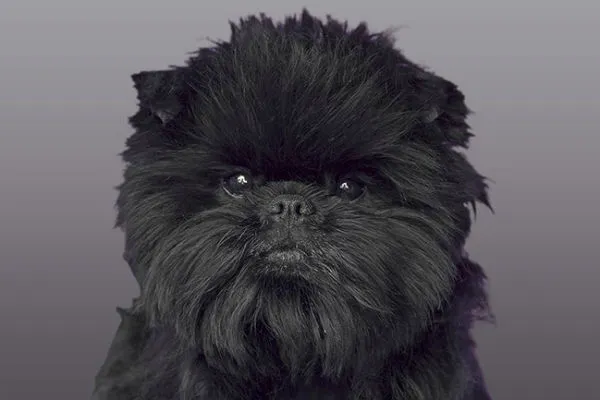 Playful Affenpinscher with a wiry, low-shedding coat, known for its monkey-like appearance
Playful Affenpinscher with a wiry, low-shedding coat, known for its monkey-like appearance
The Affenpinscher, whose name charmingly translates to “monkey-like terrier,” is a small, intelligent, and famously fearless breed. Despite their compact size, these Toy group dogs are confident and watchful, often acting as excellent little guardians. Their wiry coat is a significant advantage for those seeking [hypoallergenic small dog breeds that don’t shed]. Affenpinschers shed very minimally and are also noted for having almost no “doggy odor,” making them a fantastic choice for indoor living. Maintaining their shaggy-yet-neat appearance is relatively easy, requiring just a twice-weekly brushing with a slicker brush and comb. Beyond their low-maintenance coat, Affenpinschers are celebrated for their engaging sense of humor, bringing joy and lively companionship to any household.
Basenji
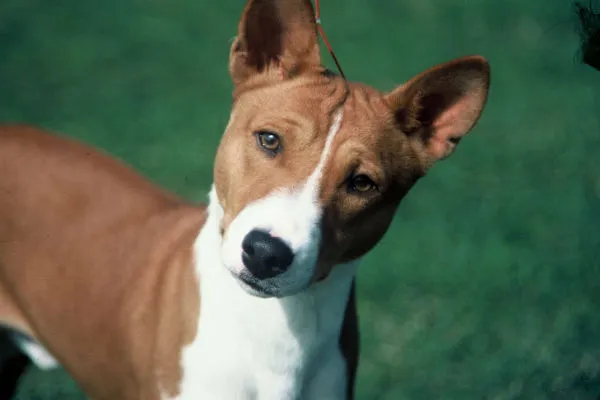 Alert Basenji with a short, fine coat, a non-shedding small dog breed
Alert Basenji with a short, fine coat, a non-shedding small dog breed
For individuals who appreciate the elegant appearance of hounds but wish to avoid their characteristic odor and shedding tendencies, the Basenji presents an appealing alternative. This unique small dog breed is known for shedding very minimally, thanks to its short, fine coat that demands little more than occasional brushing to stay in top condition. Basenjis are also famously quiet, often referred to as “barkless dogs,” making them an ideal choice for apartment dwellers who prioritize a peaceful home environment. However, their energetic nature means they thrive with daily exercise and playtime, ensuring they remain happy and well-adjusted companions.
Bichon Frise
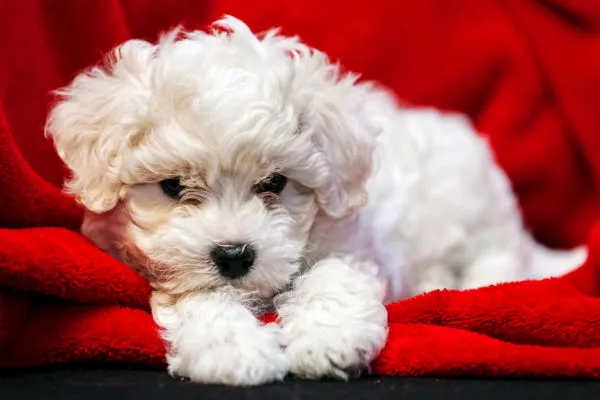 Fluffy white Bichon Frise, a truly hypoallergenic small dog breed with a non-shedding coat
Fluffy white Bichon Frise, a truly hypoallergenic small dog breed with a non-shedding coat
The Bichon Frise is truly a poster child for [hypoallergenic small dog breeds that don’t shed]. These joyful, affectionate, and charming dogs are frequently recommended for people with allergies because their hair grows continuously rather than shedding seasonally. This means they release very little dander into the environment. While they are a dream for allergy sufferers, Bichons are not maintenance-free. Their signature powder-puff appearance requires dedicated grooming, including frequent brushing (preferably daily to prevent mats) and regular professional trims. Occasional baths are also essential to keep their fluffy white coats pristine. Their playful and loving disposition makes the grooming effort well worth it for families seeking a delightful, low-allergen companion.
Bolognese
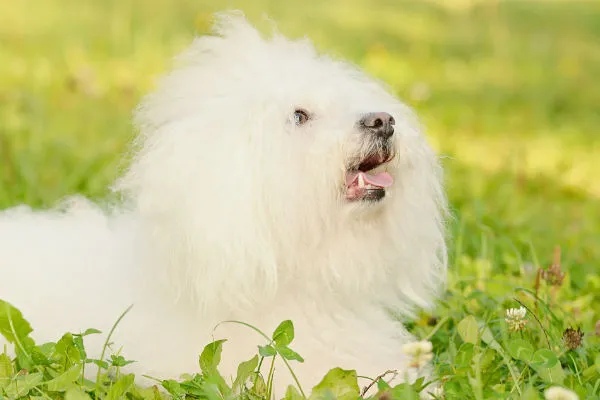 Elegant Bolognese dog with a distinctive fluffy coat, a non-shedding small dog
Elegant Bolognese dog with a distinctive fluffy coat, a non-shedding small dog
Mirroring the non-shedding qualities of the Bichon Frise, the Bolognese also boasts a distinctive fluffy coat composed of hair rather than fur. This delightful breed is an excellent option for those seeking [hypoallergenic small dog breeds that don’t shed] because they do not shed. However, their unique coat demands regular attention. Daily brushing is essential to remove dead hairs and prevent tangles or mats from forming, ensuring these lovable lap dogs always look their best. Bolognese dogs are known for their calm, affectionate, and devoted nature, making them perfect companions for individuals or families who can commit to their grooming routine in exchange for a loving, low-allergen presence in their home.
Brussels Griffon
 Charming Brussels Griffon, a small low-shedding dog breed with a thoughtful expression
Charming Brussels Griffon, a small low-shedding dog breed with a thoughtful expression
Despite its small stature, the Brussels Griffon is a robust and spirited dog that thrives without excessive pampering. Available in both smooth-coated and rough-coated varieties, both types are minimal shedders, making them a suitable choice for those sensitive to dog hair. Regular grooming is beneficial for both coat types to maintain their neat appearance. Their compact size makes them ideal for various living situations, as a daily walk combined with indoor playtime typically suffices for their exercise needs. Brussels Griffons are intensely loyal and form strong bonds with their families, doing best in homes where they receive ample companionship and attention. They are truly affectionate little dogs with big personalities.
Chinese Crested
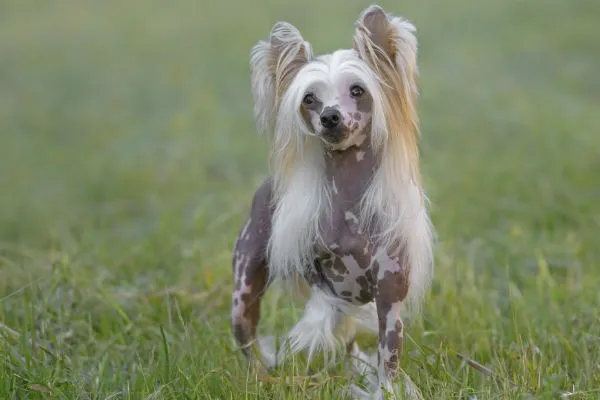 Unique Hairless Chinese Crested with hair on its head, tail, and feet, a non-shedding small dog
Unique Hairless Chinese Crested with hair on its head, tail, and feet, a non-shedding small dog
For those looking to entirely avoid shedding, the Chinese Crested offers a unique solution as a hairless small dog breed. This breed comes in two distinct coat types: the hairless and the powderpuff. The hairless variety features smooth skin with tufts of hair only on their head, tail, and feet, ensuring virtually no shedding. The powderpuff, by contrast, is covered with a soft, fine coat of hair that sheds very minimally. Hairless dog breeds, however, require specific dermatological care and attention. Their exposed skin needs protection from harsh sun and cold temperatures, and they can be more prone to skin irritations. Despite these considerations, Chinese Cresteds are affectionate, playful, and develop strong bonds with their owners, making them intriguing and low-allergen companions.
Coton De Tulear
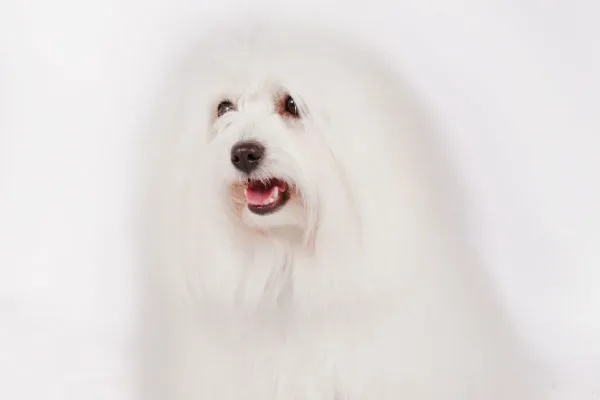 Fluffy Coton de Tulear with a long, white coat, a beloved hypoallergenic small dog
Fluffy Coton de Tulear with a long, white coat, a beloved hypoallergenic small dog
The Coton de Tulear is celebrated for its distinctive, long, fluffy coat, which gives it its name (Coton means cotton). This beautiful coat is considered hypoallergenic, establishing the Coton de Tulear as an excellent choice for allergy sufferers and those specifically seeking [hypoallergenic small dog breeds that don’t shed]. While their shedding is minimal, their luxurious coat does require commitment to daily grooming to prevent tangles and mats and maintain its pristine condition. Owners find this effort immensely rewarding, as the Coton de Tulear’s lighthearted, gentle, and highly affectionate nature makes them incredibly endearing and joyful companions, perfectly suited for family life.
Havanese
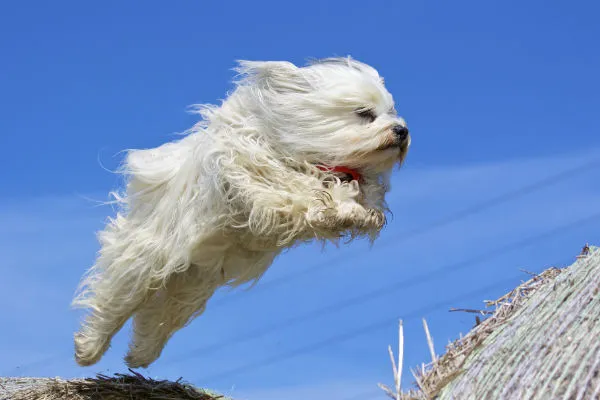 Charming Havanese dog with a long, silky coat, a playful non-shedding small breed
Charming Havanese dog with a long, silky coat, a playful non-shedding small breed
The Havanese, the national dog of Cuba, captivates owners with its patented spunky charm and a magnificent coat that simply doesn’t shed. This desirable trait means less time spent lint rolling furniture and more quality time romping with this playful and intelligent companion. As one of the healthiest small dog breeds that don’t shed, they bring both joy and a low-allergen presence to a home. Their long, silky coat does require weekly brushing and regular baths to keep it clean, healthy, and free of mats. Havanese are adaptable and thrive in various living situations, as long as they are close to their human family, offering boundless affection and entertainment.
Maltese
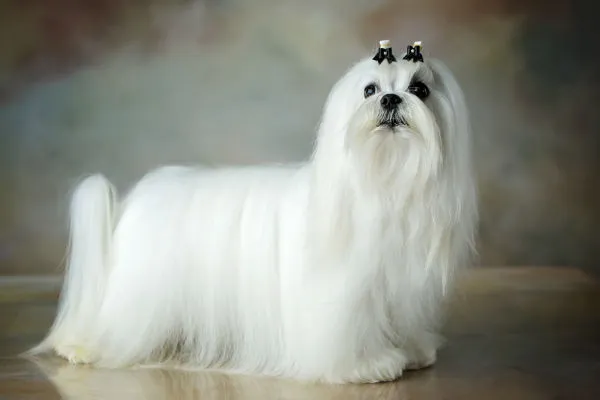 Elegant Maltese dog with long, flowing white hair, a classic non-shedding lap dog
Elegant Maltese dog with long, flowing white hair, a classic non-shedding lap dog
Maltese dogs have enchanted humans for over three millennia, a testament to their enduring appeal. This ancient dog breed from Malta has maintained much of its original charm, partly due to their long, flowing white coats that shed very little, making them an ideal lap dog and a perennial favorite among small, non-shedding breeds. While their shedding is minimal, their beautiful coats do necessitate regular grooming. Daily brushing is crucial to prevent mats and tangles from forming, and occasional baths are needed to keep their silky hair clean and free of dirt. The Maltese are gentle, intelligent, and highly affectionate, known for their devotion to their owners and their graceful, yet lively, demeanor.
Lhasa Apso
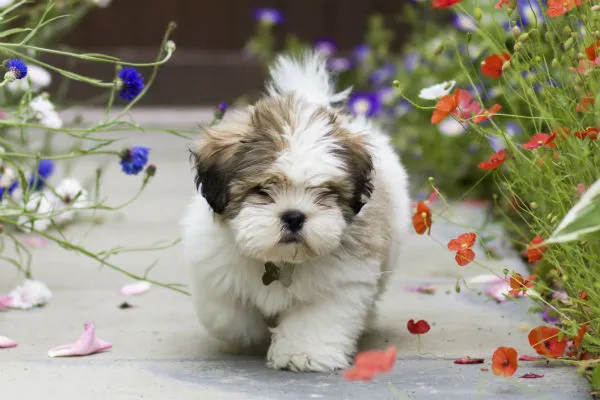 Majestic Lhasa Apso with a long, dense coat, a beloved low-shedding companion
Majestic Lhasa Apso with a long, dense coat, a beloved low-shedding companion
Originating from the snowy Himalayas of Tibet, the Lhasa Apso is a small dog breed that makes an exceptional companion. Known for their calm yet playful disposition, they enjoy engaging in brisk walks outdoors just as much as they relish a cozy rest in their owner’s lap. Lhasa Apsos are highly prized among [hypoallergenic small dog breeds that don’t shed], as their hair grows long but sheds very minimally. This characteristic, however, means their coats require significant maintenance. Many owners opt for a shorter “puppy cut” to simplify grooming and reduce the need for daily brushing, making it easier to manage their luxurious locks. With proper care, the Lhasa Apso is a loyal, long-lived, and endearing family member.
Miniature Schnauzer
 Alert Miniature Schnauzer with its characteristic wiry coat, a smart non-shedding small dog
Alert Miniature Schnauzer with its characteristic wiry coat, a smart non-shedding small dog
The Miniature Schnauzer is a smart, trainable, and cheerful little dog that strongly resembles its larger Standard Schnauzer cousin. This robust Terrier breed sheds very little, making it a popular choice for those seeking [hypoallergenic small dog breeds that don’t shed]. Their adaptability is remarkable; Miniature Schnauzers feel equally at home in bustling city apartments or sprawling country homes, as long as they are close to their beloved human companions. To maintain their distinctive and dapper appearance, weekly brushing and regular professional grooming (including stripping or clipping) are essential. Beyond their low-shedding coat, Miniature Schnauzers are known for their outgoing personalities, keen intelligence, and unwavering loyalty.
Poodle
 Elegant Poodle with a curly, non-shedding coat, a prime example of hypoallergenic small dog breeds
Elegant Poodle with a curly, non-shedding coat, a prime example of hypoallergenic small dog breeds
When people think of [hypoallergenic small dog breeds that don’t shed], the Poodle almost invariably comes to mind, and for excellent reason. Poodles are universally recognized for being non-shedding and hypoallergenic, making them one of the most recommended breeds for allergy sufferers. Available in various sizes, Miniature and Toy Poodles offer these desirable qualities in petite, intelligent packages, differing only in size from their Standard counterparts. All Poodles are celebrated for their exceptional intelligence, which makes them highly trainable and eager to please. They are also active and proud dogs, requiring regular exercise to match their energetic personalities. Their dense, curly hair does demand consistent professional grooming to prevent matting and keep them looking their best.
Scottish Terrier
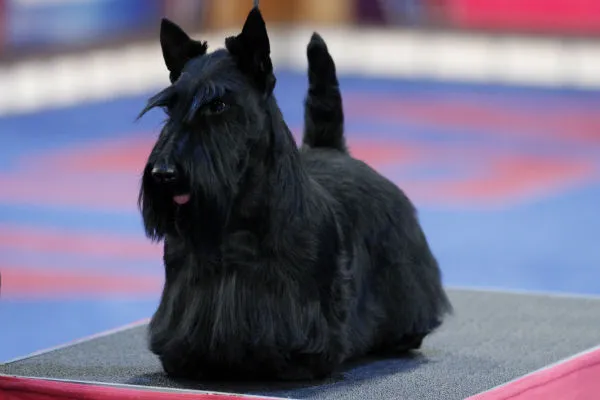 Distinguished Scottish Terrier with a wiry, weather-resistant coat, a bold non-shedding small dog
Distinguished Scottish Terrier with a wiry, weather-resistant coat, a bold non-shedding small dog
The Scottish Terrier, affectionately known as a “Scottie,” is a robust Terrier breed famed for its bold, confident demeanor and surprisingly large personality packed into a small frame. Their wiry, weather-resistant double coat sheds very little, making them a good option for those seeking medium to small dogs that don’t shed with minimal hair clean-up. While low-shedding, Scotties do require regular brushing, professional grooming, and occasional hand-stripping to maintain the health of their coat and preserve their distinctive breed outline. These clever and independent dogs possess a strong prey drive, which means owners should be vigilant around smaller animals. Loyal and courageous, Scotties are distinctive companions that thrive with consistent training and early socialization.
Shih Tzu
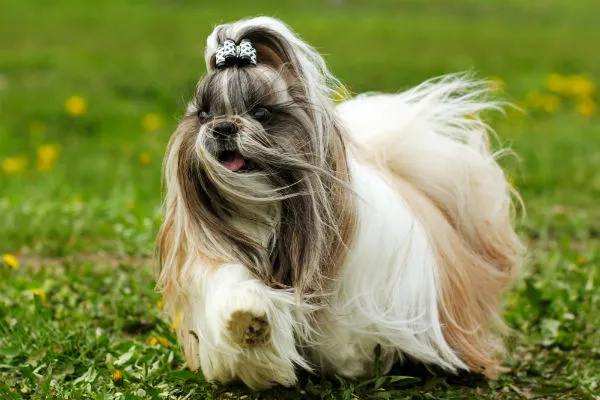 Regal Shih Tzu with long, flowing silky hair, a pampered non-shedding toy breed
Regal Shih Tzu with long, flowing silky hair, a pampered non-shedding toy breed
The Shih Tzu is another breed with an illustrious and long pedigree, dating back to the Tang Dynasty where they were cherished house pets of royalty. These “little lion dogs” come in a vibrant array of colors and patterns, captivating all who meet them. Their hallmark is a long, silky coat that is very low-shedding and looks exceptionally regal when meticulously brushed out, truly befitting their royal ancestry. This makes them a prime candidate among [hypoallergenic small dog breeds that don’t shed]. The Shih Tzu is a sturdy and lively Toy breed, often carrying itself with an air of arrogance due to their proudly held heads and curling tails. Bred exclusively as companions, their gentle, trusting, and outgoing nature makes them exceptional, devoted house pets and wonderful additions to any family.
West Highland White Terrier
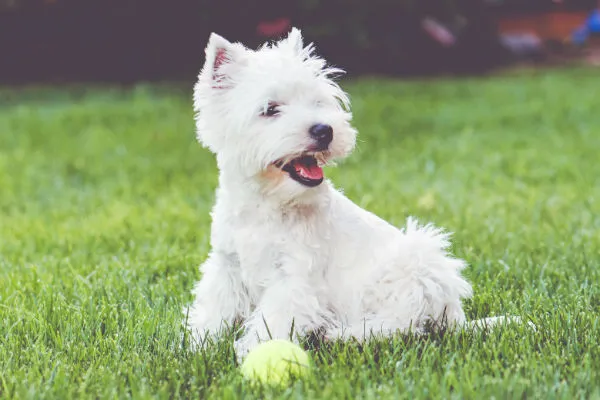 Energetic West Highland White Terrier with a coarse white coat, a low-shedding small dog
Energetic West Highland White Terrier with a coarse white coat, a low-shedding small dog
The West Highland White Terrier, fondly known as a “Westie” by its admirers, boasts a coarse, double white coat that sheds very little. This sturdy and charming little dog is intelligent, fiercely loyal, perpetually happy, and consistently entertaining. Westies are curious dogs with moderate energy levels and possess an independent streak, a common trait among Terriers, which can sometimes present a playful challenge during training. Despite this, their endearing personalities and low-shedding coats make them highly sought-after companions. They thrive in homes where they receive consistent attention, mental stimulation, and regular exercise to satisfy their lively spirits.
Xoloitzcuintli
 Unique Xoloitzcuintli (Mexican Hairless dog) showing its distinct hairless form, a truly non-shedding small dog
Unique Xoloitzcuintli (Mexican Hairless dog) showing its distinct hairless form, a truly non-shedding small dog
Also known as the Mexican Hairless dog, the Xoloitzcuintli is an ancient and relatively rare breed that captivates with its distinctive appearance. Xolos come in both hairless and coated varieties, making them a truly versatile option for those exploring [hypoallergenic small dog breeds that don’t shed]. The hairless variety retains only a small amount of hair on their heads, while the coated variety possesses a very short, fine coat that sheds minimally. As with any hairless breed, the Xolo requires special attention to its skin, needing protection from the sun and cold. Xolos are known for being attentive watchdogs and deeply affectionate companions. While they enjoy physical activities such as vigorous play and walks, they are also celebrated for their remarkably tranquil personalities around the home, offering a unique blend of energy and calmness.
Yorkshire Terrier
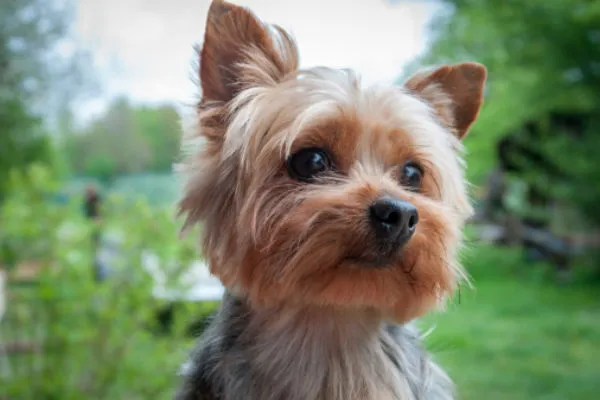 Spirited Yorkshire Terrier with its signature silky coat, a popular non-shedding toy breed
Spirited Yorkshire Terrier with its signature silky coat, a popular non-shedding toy breed
The Yorkshire Terrier, affectionately called a “Yorkie,” is a sprightly, tomboyish, and affectionate Toy breed brimming with personality. These spunky lap dogs are incredibly popular, and for excellent reason: Yorkshire Terriers do not shed, making them a top choice among small dog breeds for first-time owners who are concerned about hair. Their long, silky coats are undeniably beautiful and easy to brush daily, thanks to their small size. Despite their regal carriage, Yorkies have humble working-class roots, originally hunting rats in English clothing mills. Today, they are just as content to cuddle on their owner’s lap as they are to chase after a toy, embodying a fearless spirit in a dainty package.
Other Low-Shedding Terrier Breeds
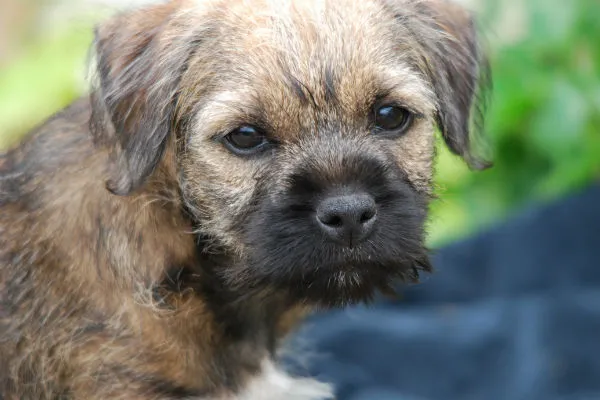 Fluffy Border Terrier, an example of a low-shedding Terrier dog breed
Fluffy Border Terrier, an example of a low-shedding Terrier dog breed
The Terrier group is a fantastic resource for discovering small dogs that don’t shed or shed minimally. Many wiry- and coarse-haired Terriers, such as the Cairn Terrier, Lakeland Terrier, and Norfolk Terrier, naturally shed less than breeds with softer, thicker undercoats. This makes Terriers an ideal category for individuals who actively seek to avoid excessive shedding without compromising on personality. Their independent spirit, intelligence, and often mischievous charm make them captivating companions, provided they receive consistent training and mental stimulation.
Choosing Your Perfect Hypoallergenic Companion
While there are many wonderful [hypoallergenic small dog breeds that don’t shed], finding the ideal companion extends beyond just a clean home. It’s crucial to carefully research each breed to ensure their temperament, energy levels, and grooming needs align with your lifestyle and personality. Non-shedding doesn’t mean zero maintenance; these breeds often require diligent brushing, regular baths, and professional grooming to prevent matting and keep their coats healthy.
Always prioritize the health and well-being of your future pet. When acquiring a dog, seek out reputable breeders or consider adoption from a trusted rescue organization. Ensure your chosen companion receives a high-quality diet tailored to their specific needs and maintain a schedule of regular veterinary check-ups to prevent health problems and ensure a long, happy life together. A little research and commitment will lead you to a loving, low-allergen friend who brings endless joy to your home.
